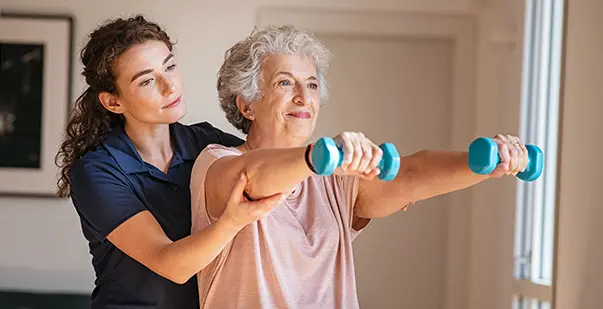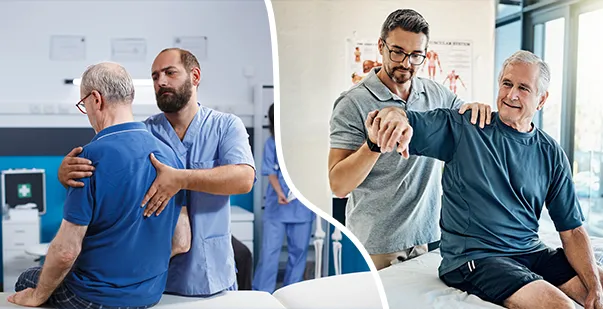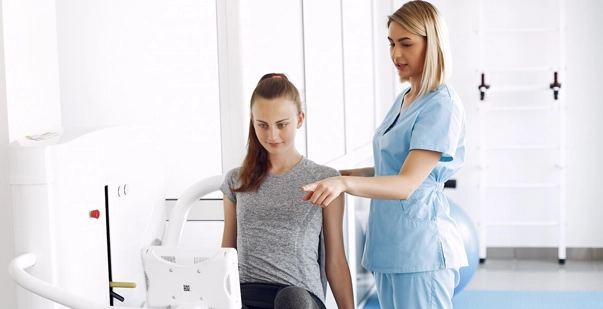Are you ready to take your physical therapy skills to the next level? For that, Physical Therapy Continuing Education courses are a must. This is extremely important to stay updated in this rapidly evolving field. A study found that therapists who are involved in ongoing education have a 25% greater chance of successful patient outcomes. This shows that CEU courses are not just options but game changer for both you and your patients.
CEU courses in physical therapy teaches more about cutting edge methods like manual therapy and neuromuscular re-education. So why wait? Dive into advanced physical therapy education, refine your skills, and make a lasting impact on your patients' recovery journeys.
Read More - The Importance of Continuing Education in Physical Therapy
What are the Advanced Techniques Taught in Physical Therapy Continuing Education Courses?
Advanced physical therapy continuing education courses teach cutting-edge techniques. This enhances patient care and improves recovery outcomes. Here are some key techniques covered:
Manual Therapy: Techniques like myofascial release and joint mobilization.
Neuromuscular Re-Education: Improving muscle function and coordination.
Biomechanical Assessments: Precision in analyzing patient movement.
Instrument-Assisted Soft Tissue Mobilization (IASTM): Using tools to treat soft tissue issues.
Electrotherapy: Techniques like TENS and EMS for pain management.
Functional Training: Advanced exercises for strength and mobility.
Read More - Exploring Online vs. In-Person Physical Therapy Continuing Education Courses
Cover In-Depth: What does Manual Therapy Include?
Manual therapy includes hands-on techniques that aim to alleviate pain. It improves range of motion, and restores function in patients. It involves targeted manipulation of soft tissues and joints. Key components are:
Joint Mobilization: Gentle movements to improve joint function and reduce stiffness.
Myofascial Release: Releasing tension in the fascia to alleviate muscle pain.
Soft Tissue Manipulation: Techniques focused on reducing muscle tightness and improving circulation.
Trigger Point Therapy: Applying pressure to specific points to relieve muscle knots and referred pain.
Muscle Energy Techniques (MET): Using a patient’s muscle contractions to improve mobility.
Craniosacral Therapy: Gentle pressure on the head and spine to treat imbalances.
Manual Lymphatic Drainage: Stimulating the lymphatic system to reduce swelling.
Read More - Advantages of Online Certifications for Physical Therapy Assistants
What is Neuromuscular Reeducation?
Neuromuscular reeducation helps improve the connection between your nerves and muscles. It is used to restore movement, balance, and coordination after an injury or illness. Through the therapy, you will learn to retrain your body and move it correctly. It is used for conditions such as stroke, injury or neurological disorders.
What are the key attributes of Neuromuscular Re-education?
Neuromuscular re-education focuses on improving the communication between the nervous system and muscles to restore movement, coordination, and function. Key attributes include:
Motor Control Restoration: Relearning proper muscle activation patterns.
Postural Alignment: Correcting posture to improve movement efficiency.
Balance and Coordination Training: Enhancing stability and coordination.
Proprioception Improvement: Increasing awareness of body position and movement.
Muscle Strengthening: Targeted exercises to rebuild weakened muscles.
Gait Training: Re-teaching walking patterns for better mobility.
Functional Movement Restoration: Integrating movements needed for daily activities.
Read More - What You'll Learn in a Physical Therapy Course for Healthcare Providers?
What are the Tools Used in Instrument-Assisted Soft Tissue Mobilization?
Instrument-Assisted Soft Tissue Mobilization (IASTM) uses specialized tools to treat soft tissue injuries. This improves mobility, and reduces pain. Common tools include:
Graston Tools: Stainless steel instruments with varying edges and curves to target different tissue areas.
HawkGrips: Ergonomically designed instruments made of surgical-grade stainless steel for precise soft tissue manipulation.
Gua Sha Tools: Smooth-edged tools traditionally used in Eastern medicine for tissue massage and pain relief.
TheraBand® Scrapers: Lightweight, flexible tools designed for soft tissue mobilization and muscle relief.
RockBlades: Handheld instruments designed to scrape over the skin to release fascia and improve mobility.
Edge Mobility Tools: Multi-functional tools used for IASTM and self-treatment of soft tissue injuries.
What are the Benefits of Electrotherapy for Physical Therapy?
Electrotherapy in physical therapy offers numerous benefits. This helps patients manage pain and recover faster. Key advantages include:
Pain Relief: Reduces acute and chronic pain by interrupting pain signals.
Muscle Stimulation: Strengthens weak muscles by stimulating contractions.
Improved Circulation: Enhances blood flow to the injured area, promoting healing.
Reduced Inflammation: Decreases swelling and inflammation in soft tissues.
Faster Recovery: Boosts the healing process for injuries and post-surgical recovery.
Improved Range of Motion: Helps relax muscles and improve joint mobility.
Tissue Repair: Stimulates tissue regeneration and repair at the cellular level.
How to Enroll for Physical Therapy CEU Courses?
Enrolling in Physical Therapy Continuing Education Unit (CEU) courses is simple and can be done through a few key steps:
Research Recognized Providers: Look for accredited institutions or online platforms offering physical therapy CEU courses.
Choose a Course: Select a course that aligns with your area of interest or specialization.
Check State Requirements: Ensure the course meets your state’s licensing and renewal requirements for CEUs.
Register Online: Most providers offer easy online registration through their websites.
Complete Payment: Pay the course fee during registration, which may vary based on the course provider.
Complete the Course: Engage in the coursework, which may include videos, reading materials, and exams.
Receive Certification: After successfully completing the course, you will receive a certificate verifying your earned CEUs.
Important Considerations in Physical Therapy CEU Courses
When choosing Physical Therapy Continuing Education Unit (CEU) courses, it's important to consider several factors. This ensures the course aligns with your professional goals.
Accreditation: Ensure the course is recognized by prominent bodies to meet state licensing requirements.
Course Relevance: Choose courses that align with your practice area or specialty.
Delivery Format: Consider whether the course is offered in-person, online, or in a hybrid format that suits your learning style.
Instructor Credentials: Verify the qualifications and expertise of the course instructors.
Cost and Financial Aid: Evaluate the cost of the course and available financial aid options.
Duration and Scheduling: Check the course length and scheduling flexibility to fit your availability.
Feedback and Reviews: Look for reviews or feedback from past participants to gauge the course quality.
Injuries or Accidents that Demand Physical Therapy
Certain injuries or accidents often require physical therapy for effective rehabilitation and recovery. Common conditions include:
Sports Injuries: Sprains, strains, and fractures sustained during athletic activities.
Post-Surgical Rehabilitation: Recovery from surgeries like knee replacements, shoulder repairs, or spinal surgeries.
Motor Vehicle Accidents: Whiplash, back pain, and joint injuries resulting from collisions.
Workplace Injuries: Repetitive strain injuries (RSI), back injuries, and other conditions from occupational activities.
Neurological Conditions: Stroke, multiple sclerosis, and Parkinson’s disease, which can impair movement and function.
Chronic Pain Conditions: Fibromyalgia and arthritis that require management through physical therapy.
Balance Disorders: Injuries that affect coordination and stability, often due to falls or vestibular issues.
Postpartum Recovery: Rehabilitation for pelvic pain and diastasis recti after childbirth.
Note From Learntastic
Advanced techniques in physical therapy continuing education courses are important for professionals who want to provide better care to patients. These courses provide in-depth knowledge of innovative practices. You will learn vital techniques such as manual therapy, neuromuscular re-education, and instrument-assisted soft tissue mobilization. Physical therapists can offer more effective treatments unique to individual patient needs.
Investing in these educational opportunities helps therapists to stay current with industry advancements. This leads to better recovery experiences for their patients. As you consider your next steps in professional development, opt for advanced education and raise the standard of care you provide.
References
https://handsoncompanies.com/pt-courses/
https://educationresourcesinc.com/courses/professions/physical-therapy/
https://www.glseminars.com/
https://www.medbridge.com/educate/courses/iastm-advanced-techniques-shawn-burger




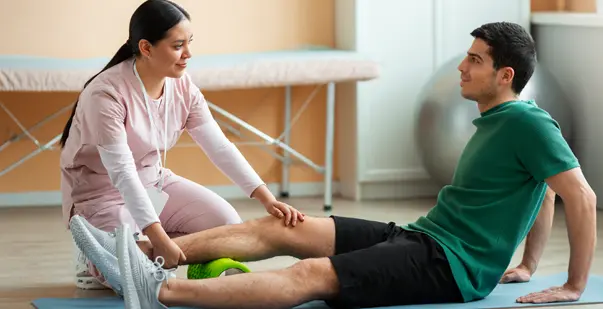


.webp)
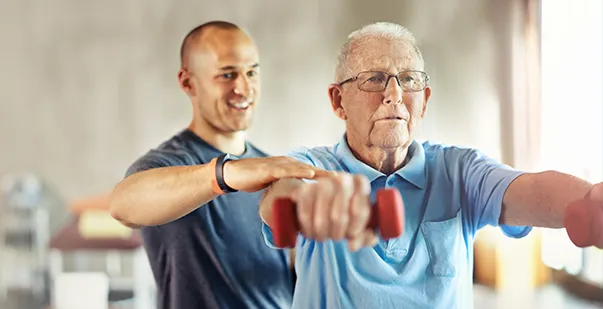

.webp)

